
The Charlotte Museum of History held a ceremony at The Revelry at Camp North End on Thursday night to recognize outstanding contributions to historic preservation in the Charlotte region with its annual Charlotte Gem Preservation Awards.
Also serving as the museum’s premier fundraising event, the awards ceremony aims to encourage preservation of the area’s historic buildings and streetscapes.
Mecklenburg County Manager Dena R. Diorio addressed the crowd as the event’s featured speaker on Thursday night, as she was honored by the Charlotte Museum of History Board of Trustees, which awarded her with the Charlotte Gem Award for her service to the Charlotte region.
An independent panel of local architects and preservation enthusiasts also selected six projects to receive Charlotte Gem Preservation Awards, along with two honorable mentions.
That included the Excellence in Preservation Award, bestowed upon the Catawba Cultural Center in York County for its “exemplary efforts in preserving and promoting the cultural and material heritage of the Catawba people,” who settled this area more than 6,000 years ago.
“Mecklenburg County is part of the Catawba’s historic homelands and remains a part of the modern Catawba Nation’s federally recognized service area, making Catawba Nation history a fundamental part of Mecklenburg County history,” read a release from the museum announcing the honor.

The building that houses the Catawba Cultural Center began its life as a two-room school for Catawba children in 1948, when the local Church of Jesus Christ of Latter-day Saints constructed it to provide an education to Catawba children on the reservation during segregation.
In our latest print issue, we tell the in-depth story of how the building has remained a hub for the Catawba community in the decades since, serving as home to the Catawba Cultural Preservation Project since shortly after its founding in 1989.
Read more: Catawba Cultural Center Serves as Beacon for Catawban Community
“Historic preservation is about more than conserving buildings,” stated Terri L. White, president and CEO of the Charlotte Museum of History. “It helps to preserve the soul of our communities, enriching lives, inspiring future generations and making Charlotte a more attractive place to live.”
Below are five other buildings and restoration projects that were honored on Thursday night, plus two honorable mentions.
Note: Some language comes directly from the museum’s award announcements.
Commercial Preservation: Waxhaw Livery Stable
121 South Broome St., downtown Waxhaw
Owner Mark Hernig dedicated six years to restoring and repurposing the Waxhaw Livery Stable, which was built in 1932. The building was boarded up and close to demolition when Hernig purchased it in 2015. His project turned the old stable into a vibrant commercial space that now houses the Mule Barn Mercantile, a shop featuring locally made food, art and antiques.
The restored stable tells the story of Waxhaw’s rural and equestrian history and supports the historic downtown’s economic revitalization.
Commercial Preservation: Dowd House
2216 Monument St., Camp Greene, Charlotte
James C. Dowd built this farmhouse on 248 acres in southwest Charlotte in 1879. During WWI, it became the headquarters of the US Army’s Camp Greene. It also stands as an example of Southern Victorian architecture, a style prominent in the late 1800s, of which there are few remaining examples in the region today.
Mecklenburg County purchased the property in 1985 to preserve it, but years of standing vacant took a toll on the structure. In 2018, the county invited developers to submit proposals to acquire and preserve the property. Rob Pressley of MECA Commercial Real Estate and his wife, Kathy, acquired the property and completely restored the house, expanding it for office use.
After more than two years of painstaking renovations, the Dowd House is now home to MECA Commercial Real Estate.
Commercial Preservation: Historic Dallas Jail
108 East Trade St., Dallas
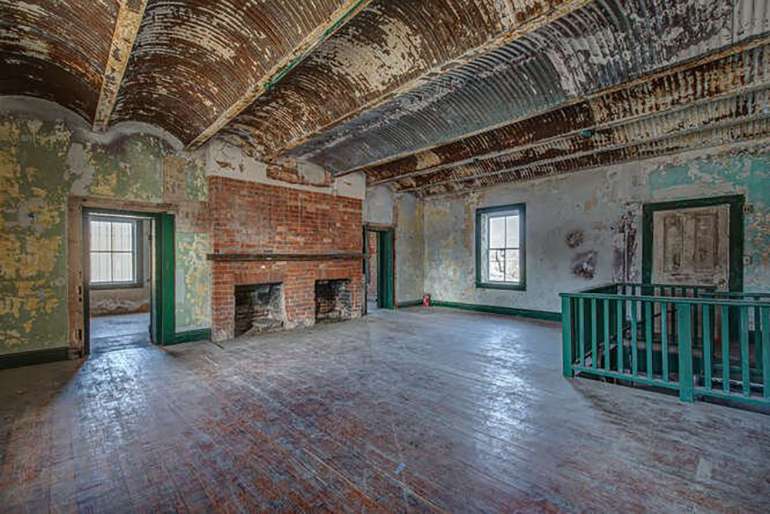
Built as the Gaston County Jail in 1848 and now a designated historic landmark, the Historic Dallas Jail is a tangible representation of early American incarceration practices and judicial systems. Its Greek Revival design also makes it a unique existing example of architecture popular at the time.
A years-long restoration effort led by the Properts family adapted the building into an event venue, positively impacting the local economy and attracting visitors. The Properts’ innovative approach to documenting the restoration process amassed 45,000 followers on TikTok, providing a window into the complexities of historic preservation projects and fostering a renewed sense of pride and unity as the community works to revitalize its historic town square.
Residential Preservation: Bungalow Unboxed
624 East Kingston Ave., Dilworth, Charlotte
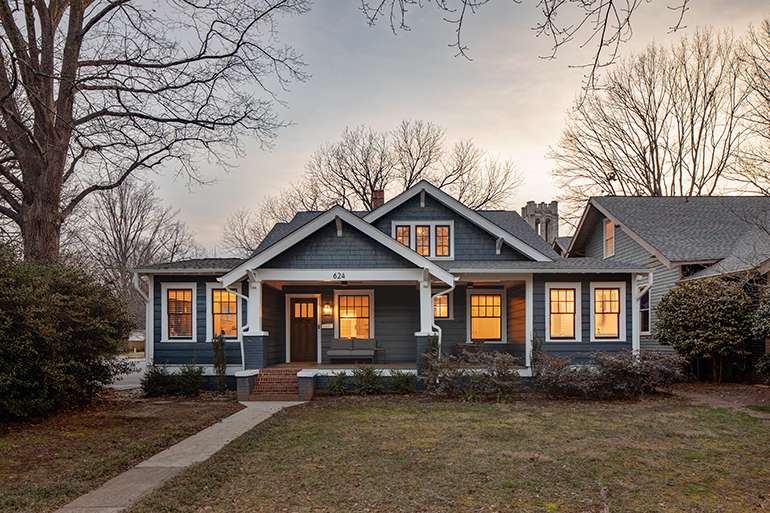
Located in Charlotte’s first streetcar suburb, the sensitive rehabilitation of this 1931 Craftsman-style bungalow exemplifies how a historic structure can be adapted to contemporary living while respecting the historic fabric of its surroundings.
Previous owners modified the building to become a triplex complete with numerous “boxes” on all sides of the building. The team from Studio H and Concept Building & Restoration removed these additions to return the bungalow to a more historically informed presentation that was sensitive to the surrounding neighborhood.
Neighborhood Infill (Residential): Mini Me
906 Magnolia Ave., Dilworth, Charlotte
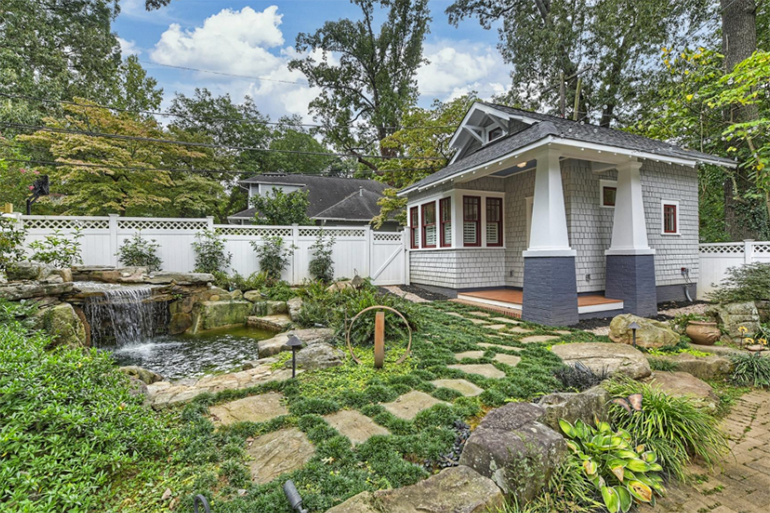
Hopedale Builders’ innovative approach to creating an accessory dwelling unit for a 1925 bungalow reflected the homeowners’ commitment to historical appropriateness and neighborhood compatibility while creating a comfortable accessory dwelling unit for use as a teen hangout, home office or guest house.
The new space matches the historic home’s architecture and integrates into the existing landscape, helping preserve the neighborhood’s identity.
Honorable Mention – Commercial Preservation: Petit Phillipe
4001 Park Road, Montford Park, Charlotte
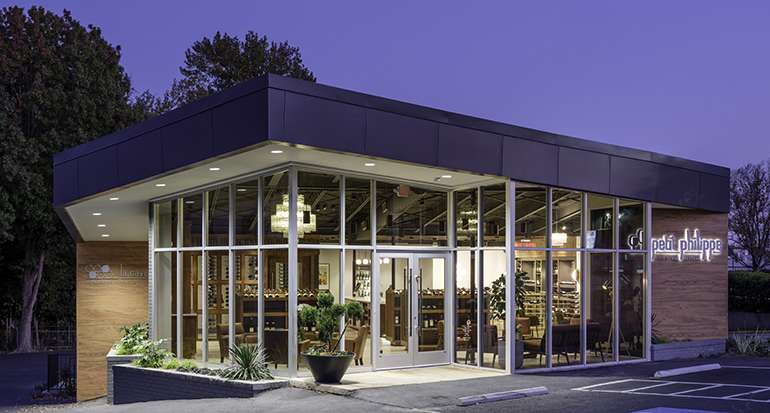
Petit Phillipe owners Mark Meissner and Casey Hickey converted this 4,500-square-foot dry cleaners in Montford Park, originally built in 1962, into a space for their upscale wine shop. By preserving the building’s midcentury modern exterior and site, the restored space integrates authentically with the Park Road Shopping Center and The Kimberlee apartments, well-known midcentury modern landmarks in the Montford Park neighborhood.
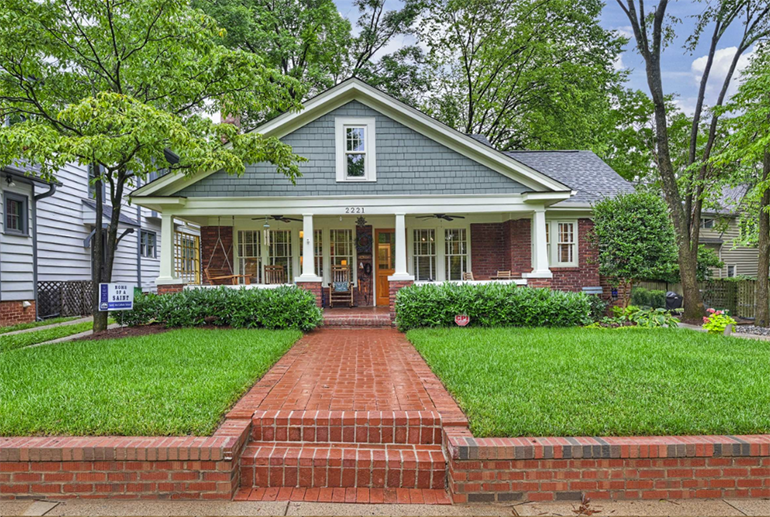
Honorable Mention – Residential Preservation: Dilworth Bungalow
2221 Ledgewood Lane, Dilworth, Charlotte
Located in Dilworth, the renovation of this 1920s-era bungalow maintained the essential design elements of the Craftsman Style while enhancing the home’s functionality for its current owners. The project tackled numerous challenges including an irregularly shaped lot and a maxed-out setback allotment.
Despite the need to go up instead of out, the home maintained the sense of façade and blends seamlessly with the surrounding homes.





